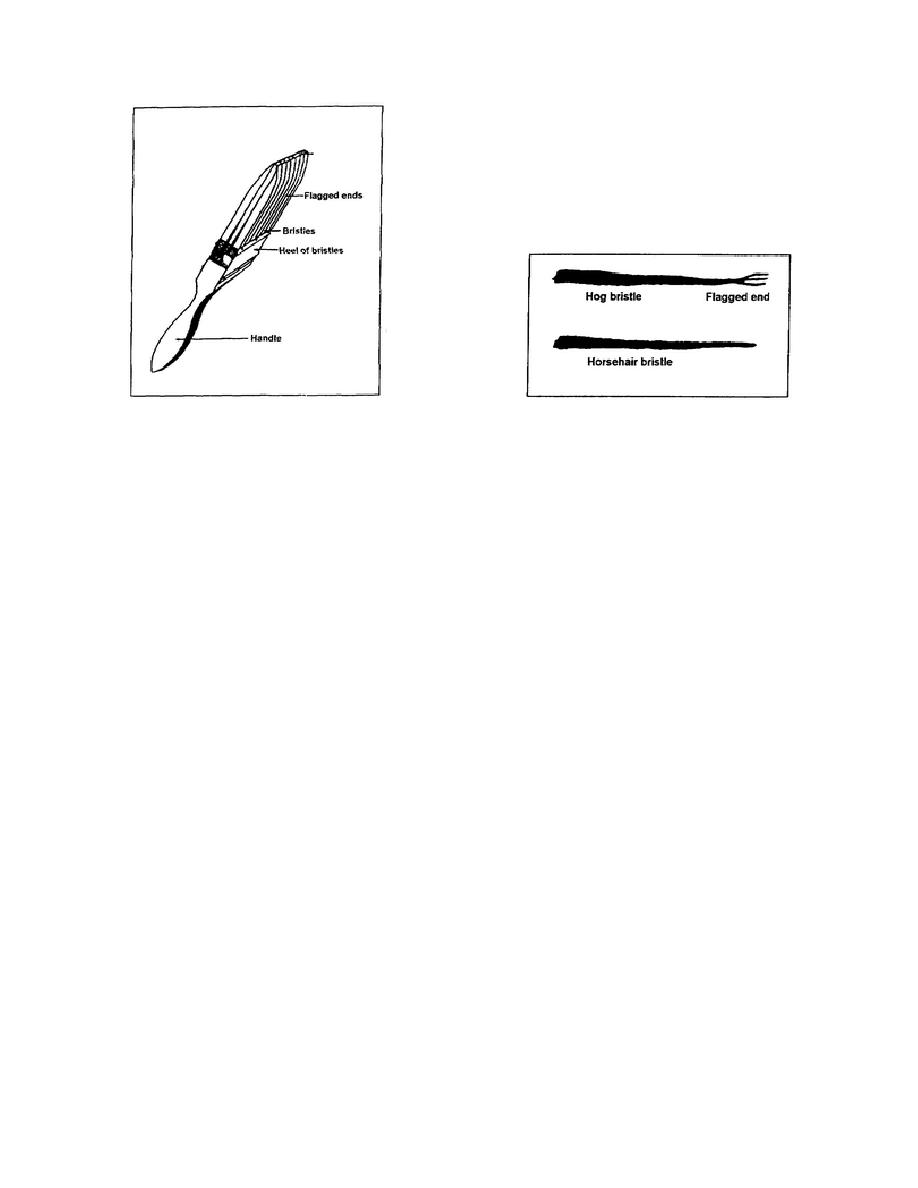
Figure 3-23. Bristles
Figure 3-22. Principal paintbrush parts
b. Materials, Sizes, and Shapes.
(1) Common materials for paintbrushes are hog bristle, nylon, and horsehair
Hog bristle is suitable for applying enamels or oil-based paints that produce a smooth
finish on interior or exterior surfaces. The hog bristle is a tapering, hollow tube that
forms natural, flagged ends. The flagged end of each bristle is like a little brush.
These ends pick up and carry large amounts of paint and help spread the paint evenly
on the surface. Hog bristles wear away and continuously form flagged ends as the
tube splits.
Nylon is suitable for applying water- or oil-based paints to interior or exterior
surfaces. This synthetic bristle is tapered and possesses the resiliency and toughness
required for painting operations. Nylon bristle is similar to hog bristle, except the
ends of nylon bristle are sanded to make them flag. After they are once flagged, they
will continue to flag naturally as the bristle wears away. Do not use nylon bristles to
apply lacquer, since the solvents will ruin the bristles. Cleaners containing strong
acid, alcohol, or phenolic solutions will damage synthetic bristles.
Horsehair is a substitute for hog bristle. It is made from a horse's mane and/or tail,
and it does not have the elasticity and life found in hog bristle. Horsehair does not
retain its stiffness when immersed in oil or paint. It lacks toughness, strength, and
wearing qualities; and it paints unsatisfactorily.
3-21
EN0562



 Previous Page
Previous Page
